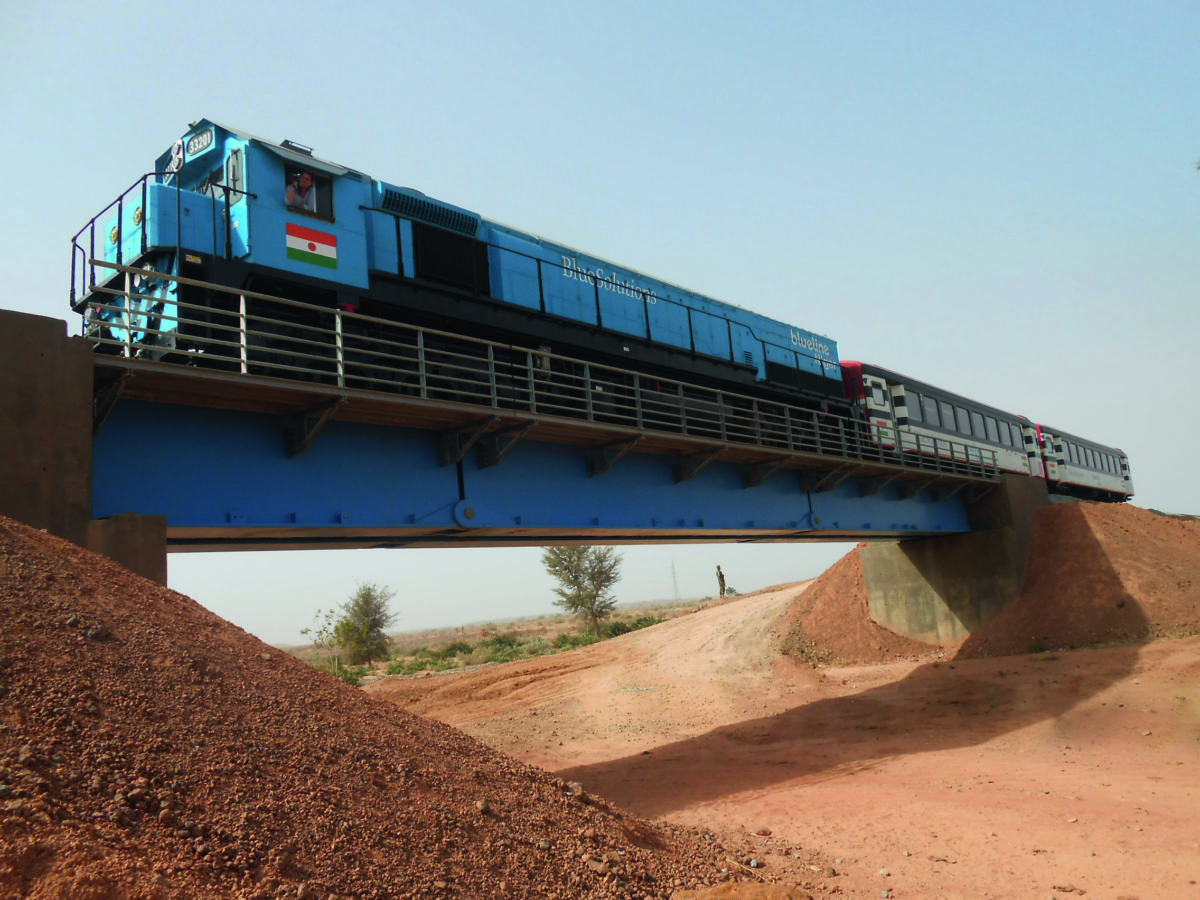Claude Valdenaire still remembers the day, almost 19 years ago, when the director of the company, Philippe Matière, asked him to “invent” a modular bridge. He then held the position of head of the Metal Construction Design Office.
“Philippe Matière, a true entrepreneur at heart, wanted to develop a temporary modular bridge activity for quick use for a war site in Kosovo,” he explains. I sketched the first drawings in my office, then everything went very fast. I played the role of conductor with a small team composed of Philippe Matière and Mr. Lestrade, sales manager. In order not to work alone and to have this concept validated by an internationally recognized engineering office, we finally asked the designer of works of art JMI (Jean Muller International) of the EGIS group to help us. »
The vision of a new modular bridge
Philippe Matière had a very clear idea of what would later become Unibridge® bridges: a modular structure, quick to assemble, economical, installation by crane or by launching, transportable in 40-foot containers and complying with all international standards. “Designing beams that were containerizable was critical for Philippe Matière, who understood the economic interest of container transport compared to bulk,” says Claude Valdenaire.
For their part, the notions of modularity and speed of assembly were inspired by the temporary modular bridges invented by Donald Coleman Bailey for the British Army. “ Shortly before the Second World War, Bailey had developed a bridge with fairly light modular panels (400 kg max per component) assembled by axes that could be mounted just with human force and even under enemy fire ,” says Claude Valdenaire.
From sketch to Unibridge® concept
Realized in a few months, the first version of ideas (V0) was never manufactured. After several prototypes (V1 & V2), it was finally the V3 in 2007 that gave birth to the Unibridge® concept: a simple system of standard metal structures in prefabricated “lego” produced in factories, delivered as a kit and assembled on the site seamlessly, for lengths and widths on demand! Its advantages: its modularity, the simplicity of the construction and transport of Unibridge® boxes, its speed of assembly.
Other virtues: the simple nature of the connections with ears and axes between technically very robust modules and the exceptional quality of the materials used for its construction and in particular for the axes, which make it a unique product in the world. Industrial production begins and the first bridges are delivered, not in Kosovo, but in France, in Cantal to open a road in the village of Massiac and then in the ski resort of Les Orres in the Alps.
The first (big) success of the new modular bridge
The contracts signed in the Philippines in 2008 marked the beginning of the ascent of the Unibridge® Bridges and its evolution into a definitive bridge. “At the time, the Philippine government was looking for a concept of definitive metal bridges, following a breach of contract with a British supplier of Bailey-type panel bridges,” recalls Claude Valdenaire. Our Australian sales representative saw an advertisement in the local newspaper and our sales teams approached the Philippine contractors to finalize a first contract for 72 Unibridge® bridges with the DPWH (Department of Public Works and Highway) and a second contract for 418 bridges with the DAR (Department of Agrarian Reform). Then we moved to present our concept even if it was not finalized!
A colossal first order that led Matière® to partner with Eiffage to benefit from its know-how in large-scale production.
Subsequently, we replaced the metal decking with a concrete deck slab and our temporary all-metal bridge became a definitive mixed bridge! »
Always evolving
Unibridge® bridges are constantly evolving and it is currently a seventh version that should see the light of day in early 2022, under the leadership of Luc Vandemoortele, Material Engineer based in Indonesia.
The objective is twofold: to incorporate the structural improvements detected over the course of the applications and to revise all the documents necessary for its production (plan, quantitative, models and 3D animation) in order to create a homogeneous production environment. “This V7 will make it possible to gain in efficiency but also to make our concept even safer,” says Luc Vandemoortele. Our goal is to have a complete Unibridge® catalog with standard parts for both its production and construction. This standardization is key to selling our product in markets with different regulations. »
A wordwide succes
Since its creation, the Unibridge® concept has experienced tremendous success with multiple achievements in many countries, especially in the process of development, to improve traffic flows in cities, such as Senegal for example. Autoponts in the city (flyover), road bridges in rural areas, urban motorways… The Unibridge® adapts to multiple configurations.
While he is proud to have contributed to the birth of this unique concept, Claude Valdenaire attributes this success to the entrepreneurial spirit of the Matière family. “My only merit is that I was able to sort out good and bad ideas to create a simple and competitive product,” he says. Philippe Matière knew how to sniff out the right idea, believe in it and invest in study, production and sales! This quest for innovation and this entrepreneurial spirit is transmitted from father to son and continues to animate the company today! »
More than 14,000 Unibridge® beams manufactured and delivered on all continents, representing 150,000 tonnes of steel.

